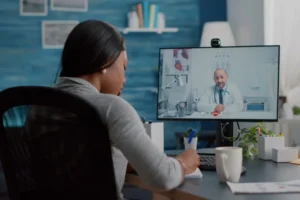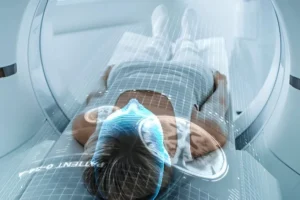Relapsing Remitting Multiple Sclerosis
- Updated on: Jul 6, 2024
- 3 min Read
- Published on Nov 19, 2020

Knowing About the Types of Multiple Sclerosis
Multiple sclerosis (MS) is a potentially disabling inflammatory disease that affects the central nervous system and peripheral nerves. Multiple sclerosis is a demyelinating autoimmune disease that has no cure.
Multiple sclerosis has four forms:
Clinically Isolated Syndrome (CIS)
It is the “first episode” of neurologic symptoms caused by inflammation and demyelination in the central nervous system. This episode lasts for about 24 hours. Early treatment of this condition can lead to delayed onset of MS.
Primary-Progressive Multiple Sclerosis (PPMS)
Primary progressive MS affects about 12% of all people diagnosed with MS. PPMS leads to deteriorating neurologic functions (from the onset of symptoms), without early relapses or remissions.
Relapsing-Remitting Multiple Sclerosis (RRMS)
More than 80% of people suffering from MS are initially diagnosed with RRMS. In relapsing multiple sclerosis, people suffer from fits or attacks (for more than 24hours), which may fade away either partially or entirely. It generally starts at about 30 years of age.
Secondary-Progressive Multiple Sclerosis (SPMS)
SPMS is a follow-up of an initial relapsing-remitting course. People with SPMS may experience minor remissions in their symptoms, which worsen more steadily with time.
What is Relapsing-Remitting Multiple Sclerosis (RRMS)?
Relapsing-Remitting MS (RRMS) is one of the most common forms of multiple sclerosis affecting about 85% of all people with MS. It is observed that women are at a three-time higher risk of being affected by RRMS than men.
Relapsing-remitting MS is a condition that occurs when a patient might suffer from relapses (deterioration after temporary improvement) of MS and periods of stability in between relapses. Relapsing-remitting multiple sclerosis can be active or non-active, i.e., some symptoms disappear, and some may resume or become permanent. At this stage, the progression of the disease cannot be understood.
People with RRMS suffer from flare-ups or exacerbations, i.e., after the relapse, some may gain, and some may lose neurological functions. The relapse is felt for at least 24 hours, and it can last up to 48 hours. Early and common signs of relapsing-remitting MS are trouble seeing, numbness, fatigue, difficulty in thinking, depression, frequent urination, balancing problems, etc.
Is Diagnosing Relapsing-Remitting MS Easy?
Relapses can be mild or severe. Neurologists state that attacks can be explained as “episodes” which can become stable after a short duration. There are no specific diagnostic procedures for relapsing-remitting multiple sclerosis. Therefore, diagnosis can be difficult, especially in people with unusual symptoms or progressive disease.
By knowing the medical history (reading the pattern of symptoms), physical examination, and MRI scans, doctors rule out the possibility of other neurological disturbances. For the diagnosis of RRMS, some criteria should be considered (suggested by National Multiple Sclerosis Society) such as at least two separate areas of damage (dissemination in space) to the myelin are observed in the central nervous system, damage occurs in a gap of at least one month, etc.
Spinal tap analysis or lumbar puncture, evoked potential tests (to measure brain’s electrical activity), blood serum tests, etc. help diagnose relapsing-remitting MS.
How to Treat Relapsing-Remitting Multiple Sclerosis?
The ultimate aim of treating RRMS is to reduce the number of relapses, reduce the disability, or slow down the progression. Early treatment is beneficial as it helps to avoid lasting nerve damage.
The chances of proper recovery are only higher if the effect of the damage is low. Disease-modifying drugs can be used as an immunotherapy to inhibit the body’s immune system from attacking nerves (as it is an autoimmune disease).
The symptoms can be managed with the help of physical therapy or occupational therapy. Rehabilitation therapy can also help in enhancing mobility and in promoting neurological safety. People with MS should treat bacterial infections to the earliest. Acupuncture, diet modification, massage, exercise, yoga or meditation, and stress management are suggested to the patient to reduce the condition’s effect.
Corticoids such as Solu-Medrol (methylprednisolone), Deltasone (prednisone), etc., can be used to reduce disease activity and progression. Ocrevus, Novantrone, Avonex, Betaseron, etc., are some FDA-approved medications for people with worsening relapsing-remitting MS. These medications are infused in the body on a daily to weekly basis, depending upon the severity of the condition.











